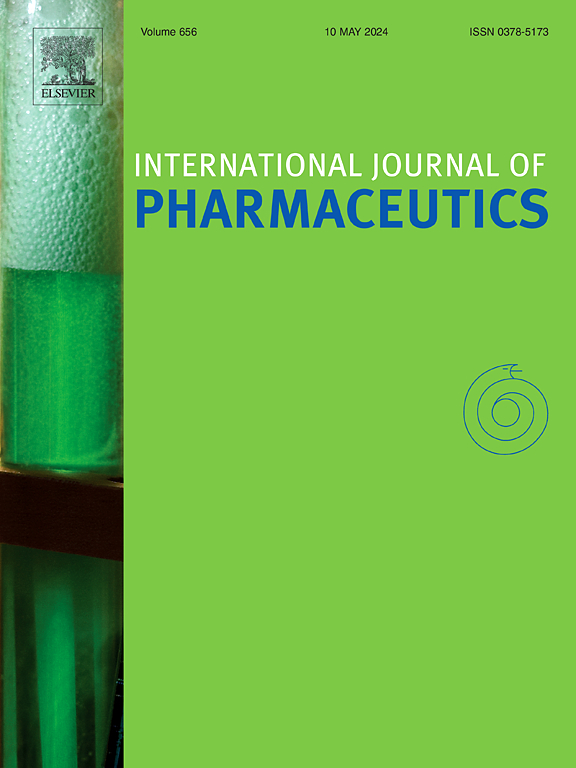辅料对 BCS III 类药物渗透性的定量分析。
IF 5.2
2区 医学
Q1 PHARMACOLOGY & PHARMACY
引用次数: 0
摘要
BCS III 药物具有高溶解度和低渗透性的特点,有报道称一些辅料可增加其渗透性。虽然研究了一些增透辅料,但增透策略仍有待改进。首先,我们建立了一个数据库并分析了辅料可能产生的影响。结果发现十二烷基硫酸钠(SLS)是使用最多的渗透性增强辅料。此外,还建立了预测加入 SLS 的 BCS III 药物 Papp 和 Peff 的定量模型,其中有统计学意义的描述因子包括分子量 (MW)、pKa、logP、溶解度、氢键 (HB) 数、可旋转键数 (RBC) 和拓扑极性表面积。这些模型具有良好的拟合性和有效的预测能力,所有相关 R2 值均超过 0.7。氢键仍然是 SLS 提高药物渗透性的最重要因素,而亲水性在这一过程中也至关重要。研究还发现,MW、logP、pKa 和 RBC 在细胞外转运中也起着重要作用。总之,目前的研究对 BCS III 药物及其辅料进行了系统的定量分析,这可能会加速 BCS III 产品的制剂研究。本文章由计算机程序翻译,如有差异,请以英文原文为准。

Quantitative analysis of excipients to the permeability of BCS class III drugs
BCS III drugs exhibit high solubility and low permeability, and some excipients were reported to increase their permeability. Although some permeability-enhancing excipients were investigated, permeability-enhancing strategy still need to be improved. Firstly, we established a database and analyzed the possible effects of excipients. Sodium lauryl sulfate (SLS) was found to be the most-used permeability-enhancing excipients. Moreover, the quantitative models for predicting Papp and Peff of BCS III drugs with SLS were developed, and statistically meaningful descriptors include molecular weight (MW), pKa, logP, solubility, hydrogen bond (HB) count, rotatable bond count (RBC), and topological polar surface area. The models demonstrated a good fit and effective predictive capability with all the correlation R2 values over 0.7. Hydrogen bonding remains the most significant factor in enhancing drug permeability with SLS, while hydrophilicity is also vital in this process. It was also found that MW, logP, pKa, and RBC play significant roles in paracellular transport. In summary, current research did the systematic and quantitative analysis of BCS III drugs and their excipients, which may accelerate formulation research on BCS III products.
求助全文
通过发布文献求助,成功后即可免费获取论文全文。
去求助
来源期刊
CiteScore
10.70
自引率
8.60%
发文量
951
审稿时长
72 days
期刊介绍:
The International Journal of Pharmaceutics is the third most cited journal in the "Pharmacy & Pharmacology" category out of 366 journals, being the true home for pharmaceutical scientists concerned with the physical, chemical and biological properties of devices and delivery systems for drugs, vaccines and biologicals, including their design, manufacture and evaluation. This includes evaluation of the properties of drugs, excipients such as surfactants and polymers and novel materials. The journal has special sections on pharmaceutical nanotechnology and personalized medicines, and publishes research papers, reviews, commentaries and letters to the editor as well as special issues.

 求助内容:
求助内容: 应助结果提醒方式:
应助结果提醒方式:


